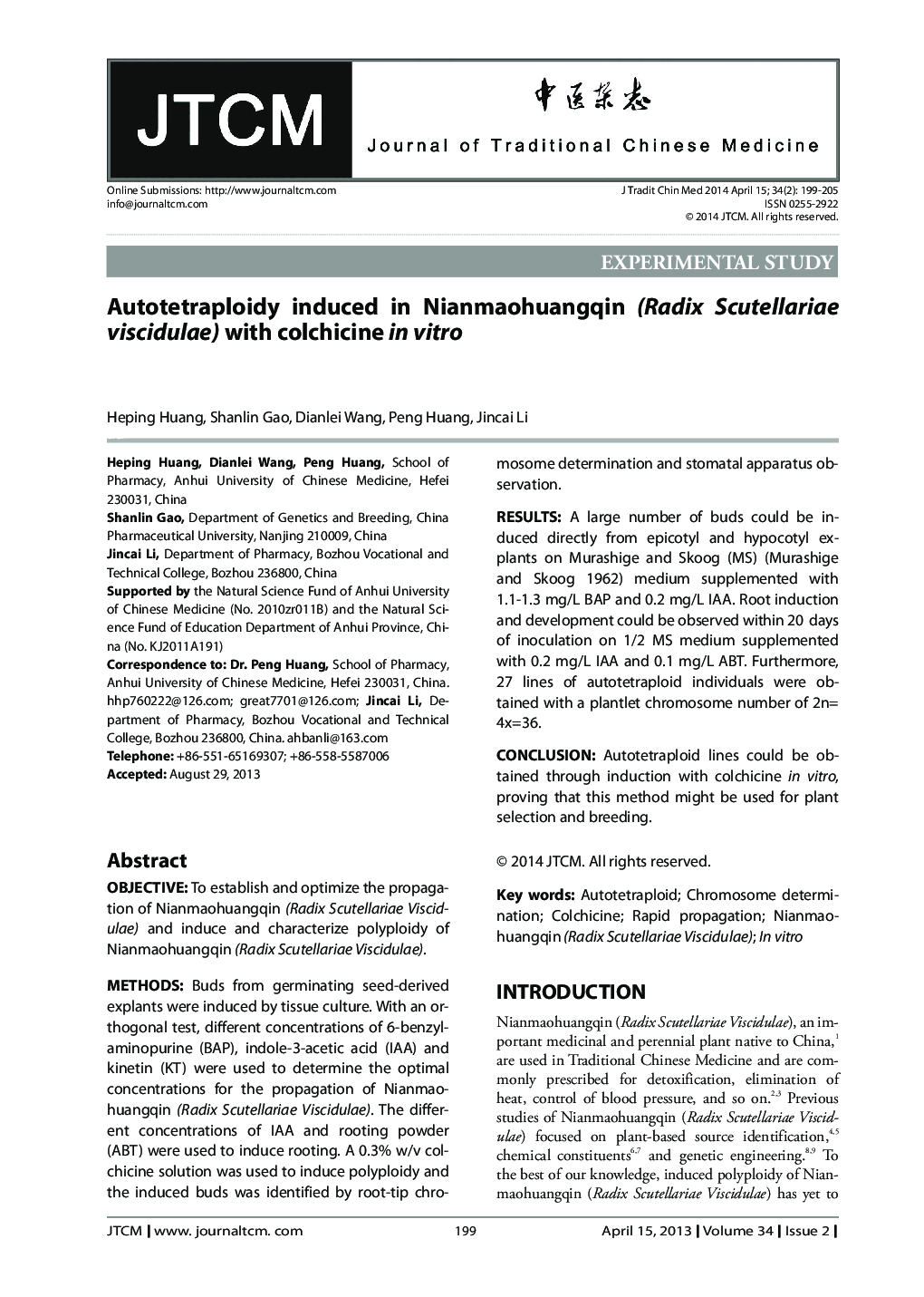| Article ID | Journal | Published Year | Pages | File Type |
|---|---|---|---|---|
| 4201170 | Journal of Traditional Chinese Medicine | 2014 | 7 Pages |
ObjectiveTo establish and optimize the propagation of Nianmaohuangqin (Radix Scutellariae Viscidulae) and induce and characterize polyploidy of Nianmaohuangqin (Radix Scutellariae Viscidulae).MethodsBuds from germinating seed-derived explants were induced by tissue culture. With an orthogonal test, different concentrations of 6-benzylaminopurine (BAP), indole-3-acetic acid (IAA) and kinetin (KT) were used to determine the optimal concentrations for the propagation of Nianmaohuangqin (Radix Scutellariae Viscidulae). The different concentrations of IAA and rooting powder (ABT) were used to induce rooting. A 0.3% w/v colchicine solution was used to induce polyploidy and the induced buds was identified by root-tip chromosome determination and stomatal apparatus observation.ResultsA large number of buds could be induced directly from epicotyl and hypocotyl explants on Murashige and Skoog (MS) (Murashige and Skoog 1962) medium supplemented with 1.1–1.3 mg/L BAP and 0.2 mg/L IAA. Root induction and development could be observed within 20 days of inoculation on 1/2 MS medium supplemented with 0.2 mg/L IAA and 0.1 mg/L ABT. Furthermore, 27 lines of autotetraploid individuals were obtained with a plantlet chromosome number of 2n=4x=36.ConclusionAutotetraploid lines could be obtained through induction with colchicine in vitro, proving that this method might be used for plant selection and breeding.
